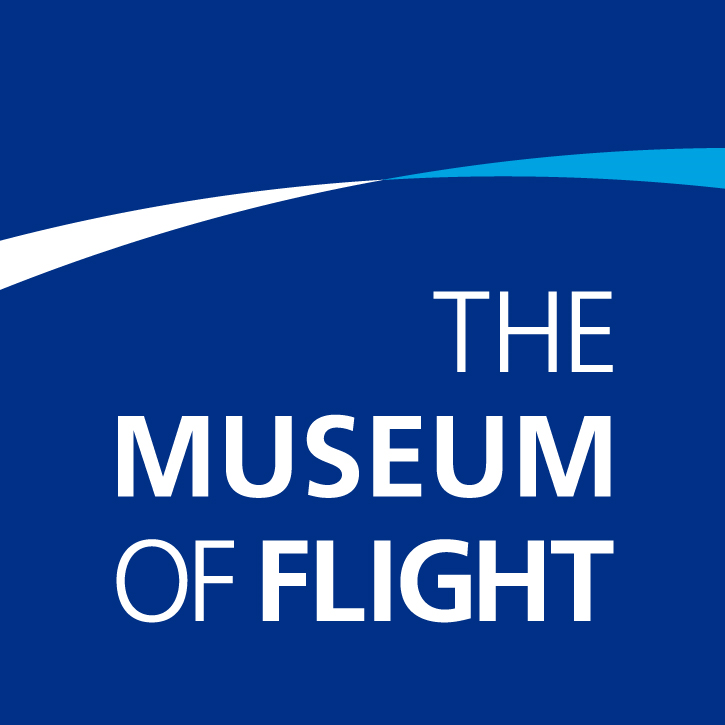Julius A. Barr Correspondence and Clippings
Content Description
The Julius A. Barr Correspondence and Clippings is a small collection consisting primarily of textual materials documenting Barr's professional and personal life from the late 1920s until his death in 1939.
The bulk of the collection consists of letters written by Barr, as well as a few written by his wife Hortense, to his parents residing in Pittsburg, Kansas, from 1926 until 1939. The letters shed light on his military training; his work importing and demonstrating aircraft for the Chinese military; a brief stint with the Boeing Company in Cheyenne, Wyoming in 1934; his return to China; and personal matters such as details about his children and his wife, his living situation, cultural impressions of China, and travels around various parts of China, Bali, and Australia. A letter written by his wife Hortense to her in-laws after his death details the 1939 crash of the Boeing Model 307 Stratoliner near Mount Rainier while Barr was serving as a Boeing test pilot and its aftermath. There is also one letter in the collection from Pearl S. Buck to Barr's parents describing benefits of membership to the China Relief Legion.
Several clippings that were collected and saved by Barr's parents mention Barr. They are primarily from American papers, though one from an Amsterdam newspaper is also present. Many of the articles document the 1939 crash of the Boeing Model 307 Stratoliner. Other clippings highlight accolades Barr received and give news on his career. Two business cards for Barr are also present: one for his work representing the Boeing Company and one for his service as an airplane pilot for the Chinese government.
The collection also includes 23 black-and-white photographs. Many are informal portraits of Barr and snapshots of his children. There are a few scenic pictures of places in China, a few images of Barr with colleagues, and two images of Balinese women. Presumably, most of these photographs were prints that Barr sent home to his parents to illustrate his life in China to them. Also present are three panoramic group portraits from Barr's military training at Brooks Field, Texas, including the 1927-1928 class, the graduating flying cadets on August 15, 1927, and the 47th Squadron on November 6, 1926.
Dates
- Creation: 1926-1939, 1941
Creator
- Barr, Julius A., 1905-1939 (Person)
Language of Materials
One clipping is in Dutch. All other materials are in English.
Conditions Governing Access
This collection is open for research and is accessible in the Dahlberg Research Center by appointment. For more information contact us.
Conditions Governing Use
The Museum of Flight (TMOF) Archives is the owner of the physical materials in the archives and makes available reproductions for research, publication, and other uses. Written permission must be obtained from TMOF archives before any publication use. TMOF does not necessarily hold copyright to all of the materials in the collections. In some cases, permission for use may require seeking additional authorization from copyright owners. Consult repository for more details.
Biographical Note: Julius A. Barr
Julius A. Barr had a varied flight career in the 1920s and 1930s, notably spending time as a personal pilot to Chinese military figures and later working as a Boeing test pilot.
Julius Augustus Barr was born on December 6, 1905 to Oren and Margaret Barr in Normal, Illinois. Barr had a varied flight career. He served in the Army Air Corps, completing cadet training at Brooks Field in San Antonio, Texas from 1926-1927. During the late 1920s he was a transcontinental air mail pilot and spent several years flying for United Airlines. Barr then spent time in China, demonstrating military aircraft to the Chinese government. He also performed, either by choice or detainment (reports vary), as the personal pilot for Zhang Xueliang, known as the "Young Marshal", who ruled much of northern and northeast China from the late 1920s-1930s and was one of the instigators of the 1936 Xi'an Incident (the kidnapping and imprisonment of Chiang Kai-Shek to force him to unite with Communists against the Japanese invasion). Barr was released from Zhang's service and immediately joined Chiang Kai-shek, becoming one of five personal pilots for General Chiang and his wife, Madame Chiang. Notably, Barr flew the couple to safety just five days prior to the sack of Nanjing (China) by Japanese forces in December 1937.
Barr returned to the U.S. in 1938, departing from Hong Kong aboard the S.S. Empress of Russia and arriving at Victoria, British Columbia, Canada, on November 14. Shortly thereafter he joined Boeing Aircraft Company as an engineer and test pilot. On March 18, 1939, Julius Barr died during flight test number 19 of the Boeing 307 Stratoliner when the plane suffered engine failure and crashed near Alder, Washington, killing all onboard.
Barr married Effie Hortense on July 1, 1928, and they had two children, Jo Ann and Gene Edward (born 1933). Barr is buried in Mount Olive Cemetery, Pittsburg, Kansas.
Source:
Biography derived from collection materials and records on Ancestry.com and www.cnac.org.
Full Extent
.3 Cubic Feet (1 2-inch legal size document box, 1 oversize folder (12x48"))
Existence and Location of Copies
Materials from this collection have been digitized and are available at The Museum of Flight Digital Collections.
Subject
- Barr, Julius A., 1905-1939 (Person)
- Barr, Effie Hortense, 1904-1985 (Person)
- Barr, Gene Edward, 1933- (Person)
- Barr, JoAnn, 1930- (Person)
- Boeing (Organization)
- Title
- Guide to the Julius A. Barr Correspondence and Clippings
- Status
- Completed Level 2
- Author
- N. Davis
- Date
- 2021
- Description rules
- Describing Archives: A Content Standard
- Language of description
- English
- Script of description
- Latin
- Language of description note
- English
- Edition statement
- 1st edition
Repository Details
Part of the The Museum of Flight Archives Repository
9404 East Marginal Way South
Seattle Washington 98108-4097
206-764-5874
curator@museumofflight.org
